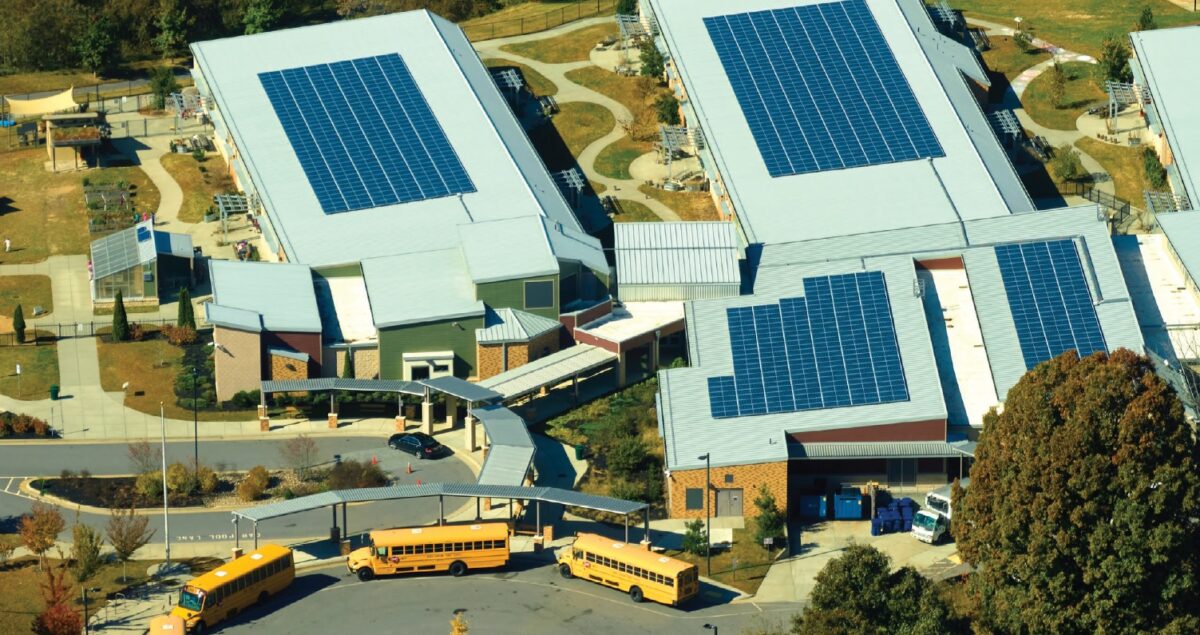In a recent report by the Institute for Local Self Reliance (ILSR), local clean energy is defined by resident involvement in every aspect of energy, from decision making through benefitting from cost savings and use of clean energy.
The report, Advantage local: Why local energy ownership matters, offers examples of local clean energy that include rooftop solar systems that are owned or leased by the homeowner as well as community solar.
Data from Lawrence Berkeley National Laboratory estimates that host-owned systems made up about 65% of residential capacity installed through 2020, and that number has grown rapidly since then. Community solar made up less than 1% of installed projects at that time, but this sector is growing rapidly as well, especially as states increasingly pass supportive policies.
Some of these advantages of local clean energy include cost savings, job creation, local wealth creation, community decision making, energy justice, and support for renewables, along with promoting social change.
One of the most direct benefits of owning one’s own solar installation, the report says, is the energy savings, estimated to be an extra $12,000 compared to third-party ownership. But residents can save even more by being a part owner and subscriber to a community solar installation, with lifetime savings estimated at an extra $14,000, compared to third-party ownership.
Job creation is another strong benefit to the local community. Solar installations offer direct positions in construction and maintenance of the project as well as direct and indirect roles in development, supplies and retail, legal services, accounting, and financing, the report states.
As an example, the report points to the analysis of community wind projects in Massachusetts, Minnesota, and Texas conducted by the National Renewable Energy Laboratory (NREL) in 2009, which found that local ownership was associated with greater local employment impact (including direct, indirect, and induced jobs) than absentee ownership.
The NREL study concluded that the studied locally owned wind farms created 1.1 to 1.3 times more jobs per megawatt than hypothetical absentee-owned wind farms during the projects’ construction phases and 1.1 to 2.8 times more jobs per megawatt during the operations phases. The study concluded that greater local clean energy ownership boosts the local economy and that “policies that promote local ownership could increase community economic impacts, such as local employment”.
The community decision making involved in local clean energy projects is another key benefit. According to the ILSR report, local clean energy enables a myriad of community members to take part in decision making. Community residents understand local needs, and can take into consideration local siting, meeting diverse needs (such as low income), and solving unique local problems. An added benefit is that local ownership can help promote supportive policies and thwart public backlash that has sidelined clean energy projects in some areas.
Community solar has benefits for residents across all incomes, and therefore serves as a form of energy justice—bringing clean energy to all. The shared ownership model of community solar means that households are protected against financial risk and they can “go solar” with no upfront costs, as opposed to putting solar on one’s own roof. An example of sharing community solar with all can be seen in Duluth Minnesota’s Lincoln Park neighborhood’s recent installation of a 37 kW solar garden that serves its low-income residents.
While the ILSR report expounds upon the many advantages of local clean energy, report authors call on policymakers to move for more change. “There are a number of key policies that legislators and regulators, especially at the state level, must adopt to make many locally owned clean energy projects feasible in the first place.”
One example of enabling legislation is virtual net metering, which the report authors consider an essential piece of policy support that brings clean energy benefits to all residents. The report also calls for federal, state, and local governments to pass legislation in the form of improved tax incentives, direct grants, accessible financing, and reformed securities regulations. While it points to the passage of the Inflation Reduction Act as making important progress, the authors see a need for expanded grant options that would replace or supplement clean energy tax credits, and they call on state and local governments to create grant programs as well.
This content is protected by copyright and may not be reused. If you want to cooperate with us and would like to reuse some of our content, please contact: editors@pv-magazine.com.









By submitting this form you agree to pv magazine using your data for the purposes of publishing your comment.
Your personal data will only be disclosed or otherwise transmitted to third parties for the purposes of spam filtering or if this is necessary for technical maintenance of the website. Any other transfer to third parties will not take place unless this is justified on the basis of applicable data protection regulations or if pv magazine is legally obliged to do so.
You may revoke this consent at any time with effect for the future, in which case your personal data will be deleted immediately. Otherwise, your data will be deleted if pv magazine has processed your request or the purpose of data storage is fulfilled.
Further information on data privacy can be found in our Data Protection Policy.